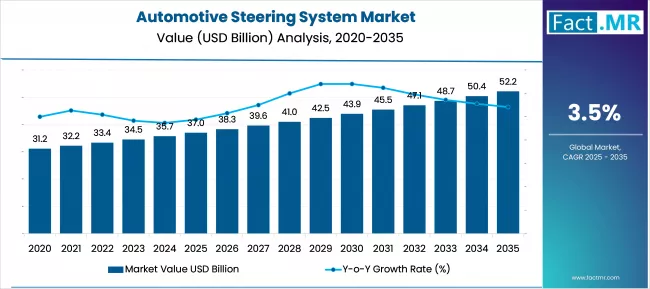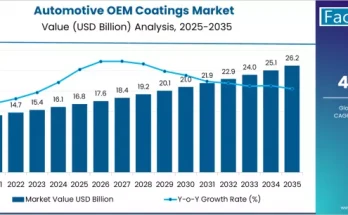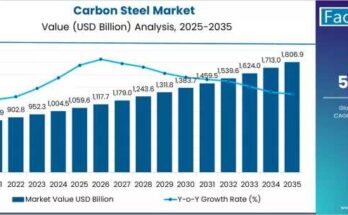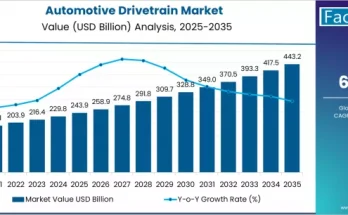The automotive steering system market is evolving rapidly as global vehicle manufacturers embrace advanced technologies that enhance driving precision, safety, and comfort. Steering systems have transitioned from simple mechanical linkages to highly sophisticated electronic and software-driven architectures, reflecting the broader transformation within the automotive industry. As consumer expectations rise and automakers prioritize enhanced vehicle handling, fuel efficiency, and driver assistance capabilities, the steering system market has become a crucial focal point in vehicle development.
The increasing production of passenger and commercial vehicles, coupled with growing adoption of electric power steering and steer-by-wire technologies, continues to shape the future of this market. Automakers are actively integrating lightweight materials, intelligent control units, and adaptive steering solutions to deliver better drivability and safety across all vehicle segments.
Market Overview
Automotive steering systems are responsible for converting driver input into directional movement, ensuring smooth vehicle control and stability. Over the years, steering technologies have undergone significant advancements, moving from traditional hydraulic mechanisms to more efficient and intelligent electronic systems.
Common steering system types include:
- Hydraulic Power Steering (HPS)
- Electro-Hydraulic Power Steering (EHPS)
- Electric Power Steering (EPS)
- Manual Steering Systems
- Steer-by-Wire Systems
EPS has emerged as the preferred steering technology for most modern vehicles due to its superior energy efficiency, reduced maintenance needs, and seamless integration with Advanced Driver Assistance Systems (ADAS). Meanwhile, steer-by-wire—an innovative system that removes mechanical linkages in favor of electronic control—is becoming a pivotal technology for autonomous and next-generation vehicles.
Growing emphasis on vehicle safety, improved highway control, and enhanced maneuverability are key factors propelling the widespread adoption of advanced steering systems.
Regional Insights
North America
North America continues to lead in the adoption of technologically advanced steering systems. Strong focus on vehicle safety, the rising penetration of autonomous features, and consistent investment in research and development drive market expansion in the region. The presence of major automotive manufacturers and suppliers further strengthens regional growth.
Europe
Europe’s mature automotive ecosystem and its stringent vehicle safety regulations significantly influence the steering system industry. European automakers are pioneers in adopting lightweight materials, electronic steering technologies, and ADAS integration. The region’s strong EV adoption rate also contributes to the growing demand for advanced EPS systems.
Asia-Pacific
Asia-Pacific represents one of the fastest-growing regions in the global steering system market. Rapid industrialization, expanding vehicle production, and rising consumer demand for enhanced driving comfort are key drivers. Countries such as China, India, South Korea, and Japan play a dominant role due to their large automotive manufacturing bases and growing adoption of fuel-efficient technologies.
Middle East & Africa
Automotive markets in the Middle East & Africa are evolving steadily, with increasing demand for passenger and commercial vehicles fueling the need for modern steering systems. Growth in road infrastructure, logistics, and construction activities supports expansion in vehicle sales and aftermarket steering components.
Key Trends & Forecast
Shift Toward Electric Power Steering (EPS)
Automakers are increasingly phasing out hydraulic steering systems in favor of EPS. The technology offers improved fuel efficiency, better response time, and seamless integration with safety systems such as lane-keeping assist and collision avoidance.
Emergence of Steer-by-Wire Technology
Steer-by-wire is transforming vehicle control by eliminating the mechanical steering column and replacing it with electronic sensors and actuators. This technology provides greater design flexibility, enhances autonomous driving capabilities, and improves safety by reducing mechanical failure risks.
Integration with Advanced Driver Assistance Systems (ADAS)
Modern steering systems are tightly integrated with ADAS features such as adaptive cruise control, park assist, and lane-centering systems. This integration enhances driver comfort, ensures better road safety, and supports the transition toward semi-autonomous and fully automated vehicles.
Focus on Lightweight and Sustainable Materials
Manufacturers are adopting lightweight metals, composites, and high-strength plastics to reduce steering system weight and improve overall vehicle efficiency. Sustainability goals are also influencing the development of eco-friendly steering components.
Growth in Electric and Hybrid Vehicles
Electric and hybrid vehicles require highly responsive steering systems optimized for quiet operation and precise control. EPS and steer-by-wire technologies are increasingly being tailored to meet the specific needs of EV platforms.
Applications & End-Use Outlook
Passenger Vehicles
Passenger cars dominate steering system usage due to growing consumer demand for comfort, safety, and enhanced driving dynamics. The segment benefits from the widespread adoption of EPS and increasing integration of smart steering technologies.
Commercial Vehicles
Commercial vehicle manufacturers are adopting advanced steering solutions to reduce driver fatigue, improve maneuverability, and enhance load-carrying safety. The need for reliable steering systems is especially critical in logistics, construction, and long-haul transportation.
Electric Vehicles (EVs)
EVs represent a rapidly expanding market for advanced steering technologies. Quiet operation, reduced emissions, and high precision make EPS and steer-by-wire ideal choices for electric and autonomous vehicle platforms.
Aftermarket Demand
The aftermarket segment for steering systems remains robust, driven by wear-and-tear replacements, technological upgrades, and rising vehicle ownership. Replacement parts for steering columns, racks, tie rods, and electronic units contribute to steady aftermarket growth.
Conclusion
The automotive steering system market is undergoing a major transformation as technological innovation, safety regulations, and evolving consumer expectations redefine vehicle dynamics. From traditional mechanical systems to intelligent electronic architectures, modern steering systems play a crucial role in shaping the driving experience.
As the automotive industry embraces electrification, digitalization, and autonomous mobility, steering systems will continue to advance rapidly. Manufacturers that prioritize innovation, precision engineering, and integration with smart vehicle technologies will be well-positioned to lead the next generation of automotive design and safety.
Browse Full Report – https://www.factmr.com/report/43/automotive-steering-system-market



